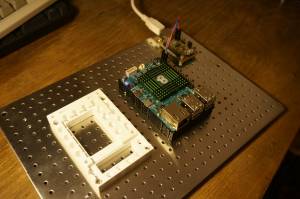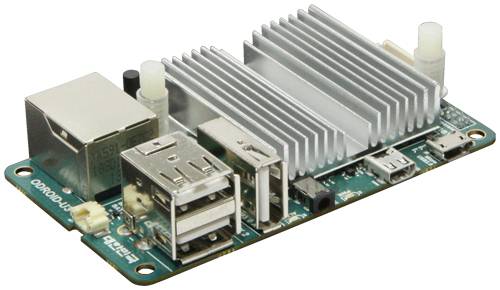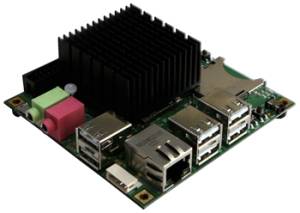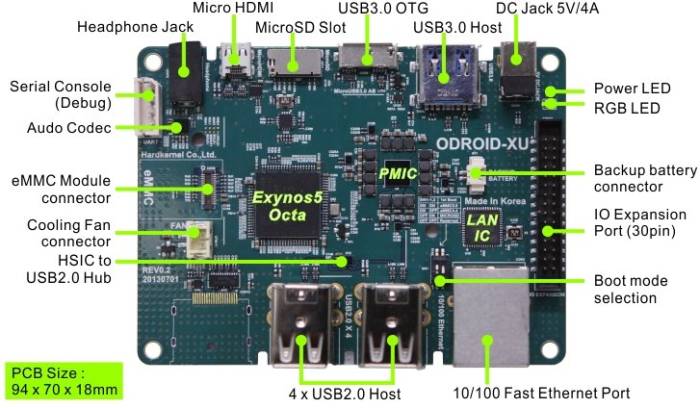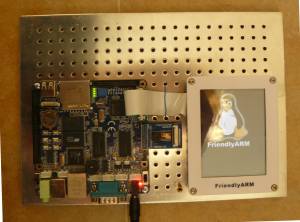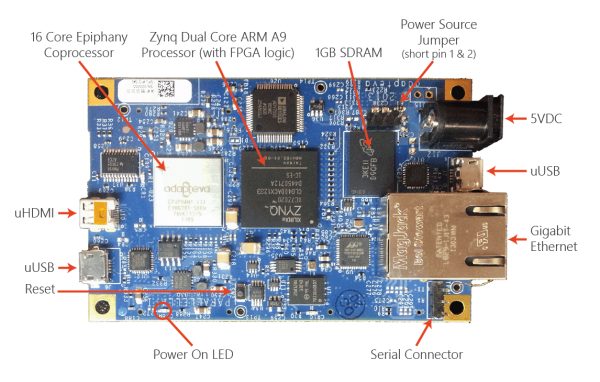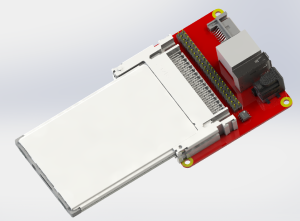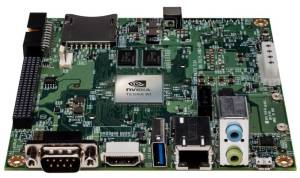This is an old revision of the document!
Table of Contents

(remove this paragraph once the translation is finished)
Computers with ARM architecture in MLAB brick system
ARM architecture is currently developing rapidly, especially thanks to its excellent computing power with 1 W power consumption in contrast with obsolescent and more complicated Intel Ix86 architecture. This situation has been achieved over the last few years mostly thanks to its massive deployment in devices like tablets and telephones.
There are several computing machines based on this architecture suitable for development applications.
Single-board computers
There is already a large number of computers of this kind - this section summarises the most interesting ones that had been tested in MLAB or applied in some of our designs.
HardKernel ODROID-C1
A slightly more robust variant with a slower processor compared to odroidu U3. For more detailed description see odroid-c1.
HardKernel Odroid-U3
It serves as a substitute for ODROD-X2 that is no longer produced. They have more or less identical parameters, only the PCB is smaller in size and some of the interfaces are no longer present. For more detailed description see odroid-u3.
HardKernel Odroid-X2
It is one of the first quadruple-core Cortex-A9 MPCore ARM computers with cores operating at frequencies up to 1.7 GHz. Operation memory 2GB is of PoP type and thus is soldered directly on the CPU chip. For more detailed description see odroid-x2. This computer contains GPU that does not yet support OpenCL.
This development board is no longer produced. As a substitute it is possible to use ODROID-U3.
In reality, this computer also has CPU module placed on separate PCB connected by connectors. The module is however glued by epoxide to the main board - a concept similar to EOMA-68, only the CPU module cannot be replaced.
HardKernel Odroid-XU
Technically speaking, it is a successor of Odroid-X2 board with a newer CPU 4x Exynos5 Octa Cortex™-A15 1.6Ghz and 4x Cortex™-A7 - all of the 8 cores integrated into one chip. Both types differ significantly in computing power and thus in power consumption. The original idea behind this concept is, that the planner will decide about the usage of cores with low computing power or more powerful cores for running the system (thanks to integration of both CPU in one case, the tasks can be transferred quickly between the cores). The GPU PowerVR SGX544MP3 already supports OpenCL 1.1 and moreover, there is a USB 3.0 available on the board - an advantage especially when connecting newer versions of SDR receivers.
Hardkernel sites - this board has not yet been tested in MLAB. It has an disadvantage of having an active cooling carried out by a fan, so the computer will not be completely noiseless. There may be problems with fan degradation and a spreading of vibrations.
Friendly ARM
An older single-board computer, which has been used in combination with MLAB brick system in several robotics projects. For more information see Friendly ARM
Parallella
Parallella is a hybrid computer with ARM and FPGA. Furthermore, there is also a Epiphany III coprocessor placed on the board. The whole device is especially suitable for signal computations.
Embedded Open Modular Architecture/EOMA-68
Jde o koncept ve kterém je použita fyzická specifikace PCMCIA karty. Jeho výhodou je, že nové ARM obvody jsou obvykle v pouzdru BGA, které potřebuje mnohavrstvý plošný spoj. Což logicky velmi prodražuje malosériovou výrobu takových zařízení. EOMA-68 specifikace tento problém řeší uzavřením takového plošného spoje do původního formátu PC card a vyvedení periferií ve standardizovaném pinovém formátu. Takto specifikovaná karta, je pak identická pro různé realizace Hardwaru, takže je pak vyráběna ve větším množství, což vzhledem k tomu, že obsahuje mnohavrstvý PCB zlevní celkové náklady na výrobu. Protože výsledný produkt ve kterém je tato karta implementována si bez problému vystačí už i se dvouvrstvým PCB.
Shrnutí výhod:
- Zařízení do kterého je karta vkládána obsahuje I2C EEPROM s identifikací
- Je možné software testovat a nastavovat mimo živý provozní systém.
- Zlevňuje celkové náklady na konstrukci specializovaného zařízení
- Je možné snadno aktualizovat výpočetní jednotku výměnou karty
Realizace tohoto konceptu:
Jetson TK1 Development Kit
Jetson TK1 Development Kit je vývojovou deskou určenou hlavně pro testování CUDA a OpenCL na embedded zařízeních. Její zvláštností je, že má integrovánu výkonnou GPU jednotku. A navíc má vyvedené porty Half mini-PCIE slot ale nemá I2S pro audio vstup.
Užitná hodnota
Všechny tyto počítače mají vyvedenou sběrnici I²C, která může sloužit k snadnému připojení čidel. A i některých jednodušších akčních členů. Dále je taky běžně vyvedena sériová linka, která naopak umožní připojení GPS a přesnou synchronizaci času.
Společným problémem všech počítačů je ale mechanická konstrukce nekompatibilní nejen se stavebnicí MLAB. Další problematickou částí je nestálost výroby. Většina zde uvedených počítačů se nebude následující rok vyrábět, nebo alespoň ne ve zde uvedené podobě. Proto by bylo na místě vytvořit i vlastní open-source řešení výpočetního hardwaru na kterém by šlo postavit síť detekčních a měřících stanic.
Pokusy o realizaci takového jsou uvedeny v seznamu open hardware počítačů.
Nativní ARM moduly MLAB
Modulů na ARM má MLAB omezeny pouze na malé ARMy
Existuje pak ještě i modul na nízkospotřebový ARM L150,,
Využití
SDR přijímač
V kombinaci s moduly SDRX01B může vytvořit integrovaný SDR přijímač v krabici UNIBOX01 Stčí připojit monitor, klávesnici. Nebo případně doplnit modul s nekonečným knoflíkem.
Terminál inteligentní budovy
Staniční server k meteorologické stanici
ARM počítač lze použít v konstrukci AWS01B

